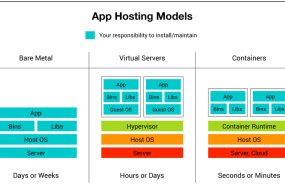
In the ever-evolving realm of technology, the landscape of cloud hosting has been a subject of constant innovation and transformation. As we venture into 2023, it’s crucial for tech enthusiasts and businesses alike to stay abreast of the latest trends in unmanaged cloud hosting. This comprehensive guide will delve into the key developments and insights that should be on your radar.
The Unraveling of Unmanaged Cloud Hosting
Unmanaged cloud hosting, often the preferred choice of tech-savvy individuals and enterprises seeking full control, is poised for significant changes in 2023. With a dynamic ecosystem, it’s essential to keep an eye on the following trends.
Edge Computing Gains Momentum
Edge computing is no longer a buzzword but a practical solution for reducing latency and enhancing the user experience. The deployment of unmanaged cloud resources closer to end-users is becoming a game-changer. As IoT devices continue to proliferate, edge computing will play an integral role in managing data efficiently.
Containerization and Microservices
Containerization technologies such as Docker and Kubernetes are now the de facto choice for managing and scaling applications in the cloud. This trend is set to persist as developers and system administrators embrace the agility and scalability provided by containers and microservices.
Serverless Computing Evolution
Serverless computing models are evolving beyond just function-as-a-service. Expect more comprehensive serverless offerings with improved scalability, security, and cost-efficiency. Tech enthusiasts will find this development intriguing for their projects.
Security in Unmanaged Cloud Hosting
Security remains paramount in the cloud hosting landscape. As threats become more sophisticated, tech enthusiasts need to stay informed about the latest security trends.
Zero Trust Architecture
Zero Trust is the new standard in cloud security. With the shift towards remote work and increased vulnerability to cyberattacks, implementing a Zero Trust architecture is imperative to secure unmanaged cloud hosting environments.
DevSecOps Integration
The integration of security into the DevOps process, known as DevSecOps, is a significant trend in 2023. This approach emphasizes security at every stage of application development, reducing vulnerabilities and enhancing the protection of cloud-hosted services.
Cost Optimization
Optimizing costs is a perennial concern for businesses and tech enthusiasts leveraging unmanaged cloud hosting. In 2023, several trends are set to help manage expenses effectively.
Spot Instances and Cost Predictability
Leveraging spot instances in cloud hosting can significantly reduce costs. Furthermore, advanced cost prediction and management tools are emerging to help organizations make informed decisions about resource allocation.
Multi-Cloud Strategy for Cost Efficiency
Utilizing multiple cloud providers strategically can lead to cost savings. As the trend of multi-cloud adoption continues, tech enthusiasts should explore how this approach can benefit their projects.
Sustainability in Cloud Hosting
Sustainability is no longer just a trend; it’s a necessity. Unmanaged cloud hosting is also evolving to reduce its environmental impact.
Green Data Centers
Green data centers powered by renewable energy sources are emerging as a sustainable solution. These data centers prioritize eco-friendliness and energy efficiency, addressing the environmental concerns surrounding cloud hosting.
Carbon Offsetting and Emission Reduction
Cloud providers are increasingly committed to reducing their carbon footprint. Tech enthusiasts can expect more comprehensive carbon offsetting programs and initiatives aimed at minimizing emissions.
Final Words
As we enter 2023, unmanaged cloud hosting continues to be a dynamic and transformative field. Tech enthusiasts must keep a keen eye on the trends outlined in this guide: Edge Computing, Containerization, Serverless Computing, Zero Trust Architecture, DevSecOps, Cost Optimization, Multi-Cloud Strategy, Green Data Centers, and Carbon Offsetting. These developments will not only shape the hosting landscape but also impact businesses and projects relying on unmanaged cloud hosting.
Commonly Asked Questions
Q1: What is the primary advantage of edge computing in unmanaged cloud hosting?
A1: Edge computing reduces latency and enhances user experience by deploying cloud resources closer to end-users, making it ideal for IoT applications.
Q2: How can DevSecOps benefit unmanaged cloud hosting?
A2: DevSecOps integrates security into the DevOps process, improving security at every stage of application development in unmanaged cloud hosting environments.
Q3: Why is sustainability crucial in cloud hosting?
A3: Sustainability is vital to reduce the environmental impact of cloud hosting. Green data centers and carbon offsetting initiatives are essential steps in this direction.
Q4: What are spot instances, and how do they help reduce costs in unmanaged cloud hosting?
A4: Spot instances are short-term, low-cost cloud resources. They can significantly reduce hosting costs for applications that can tolerate interruptions.
Q5: How can multi-cloud strategy save costs in unmanaged cloud hosting?
A5: A multi-cloud strategy allows organizations to choose the most cost-effective cloud provider for each workload, optimizing costs in unmanaged cloud hosting.
Advertisement







